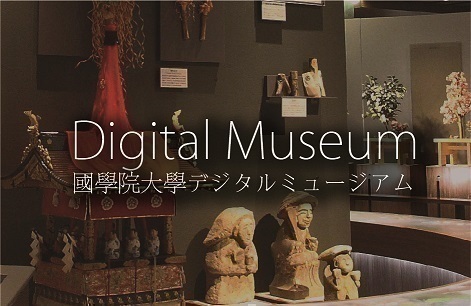- トップ
- Encyclopedia of Shinto
- Tsunoda Tadayuki
Encyclopedia of Shinto
| Main Menu: | |
| Links: |
詳細表示 (Complete Article)
| カテゴリー1: | 8. Schools, Groups, and Personalities |
|---|---|
| カテゴリー2: | Personalities |
| Title | Tsunoda Tadayuki |
| Text | (1834-1918) Chief Priest (gūji) of the shrine Atsuta Jingū. His common name was Yoshisaburō, and he used the epistolary names (gō) Ibukinoya and Shizumenoiwamuro, among others. He was born on the sixth day of the eleventh month, 1834, in Iwamurata, Kita Saku District, Shinano Province (present-day Nagano Prefecture) as the second son of Tsunoda Tadamori (Nobutsune), priest (shinkan) of Chikatsu Jinja. His father had earlier served as a retainer of the Iwamurata Domain in the positions of district magistrate, tutor to the domainal lord, and assistant instructor at the domainal school Tatsudōkan. In the spring of 1855, Tsunoda left the domain without permission and went to Edo, where he became a disciple of the Neo-Confucian scholar Fujita Tōko (1806-55), and he also began study of the thought of Hirata Atsutane (1776-1843) from the eighth month of that year. In 1862, he went to Kyoto and wrote Koshiryaku while cultivating friendship with imperial loyalists from various domains, advocating the idea of "honoring the emperor and expelling the barbarians (sonnō jōi)." In the second month of 1863, Tsunoda was involved in an incident in which the heads of the wooden statues of the first three Ashikaga Shoguns—Ashikaga Takauji, Ashikaga Yoshiakira, and Ashikaga Yoshimitsu—which had been stored at the Tōji'in temple in Kyoto, were cut off and put on public display along the Kamo river. After receiving information that he would be arrested, Tadayuki went into hiding at Inadani Valley in Shinano Province. He returned to Kyoto in 1866 and served as the personnel administrator for the Kyoto courtier Sawa Tamekazu (1812-89; father of Sawa Nobuyoshi, a famous imperial loyalist at the end of the Edo period), while devoting himself to the cause of the nation. In 1869, he was appointed Inspector (kansatsu) at the Institute of National Learning (Kōgakusho), and in 1870, he became a specially appointed clerk investigator in the educational system. In 1871, he was appointed an adjunct university official. At one time Tsunoda was subjected to slanderous charges, but in 1873 he was appointed Junior Chief Priest (shōgūji) at the Kyoto shrine Kamo Mioya Jinja, then Junior Chief Priest of Atsuta Jingū in 1874, and in 1877, Senior Chief Priest (daigūji) of the same shrine. The office of Senior Chief Priest at that shrine was later renamed simply Chief Priest (gūji). From this time until 1914, Tsunoda remained in that demanding post, working to reconstruct the shrine through rebuilding, obtaining an Imperial Order for Storage of the Sacred Seal, increasing the number of Provisional Chief Priests (gon gūji), submitting a petition to raise the status of Atsuta Shrine to that of a chokusaisha (a shrine to which imperial envoys worship and deliver offerings), as well as seeking to improve the way the shrine was treated by the imperial authorities. He died on December 15, 1918, at the age of eighty-five. His writings include the previously mentioned Koshiryaku, Sōji ryakki, Jindai hyakushu monogatari, Atsuta Jingū ryakki, and others. —Hori Mitsuo |




